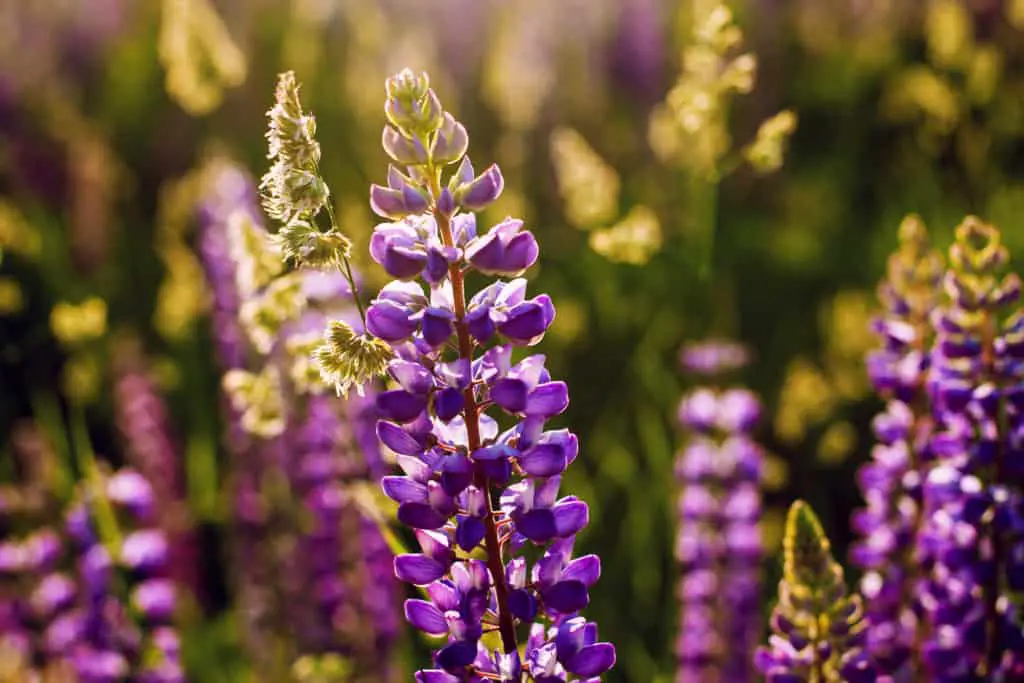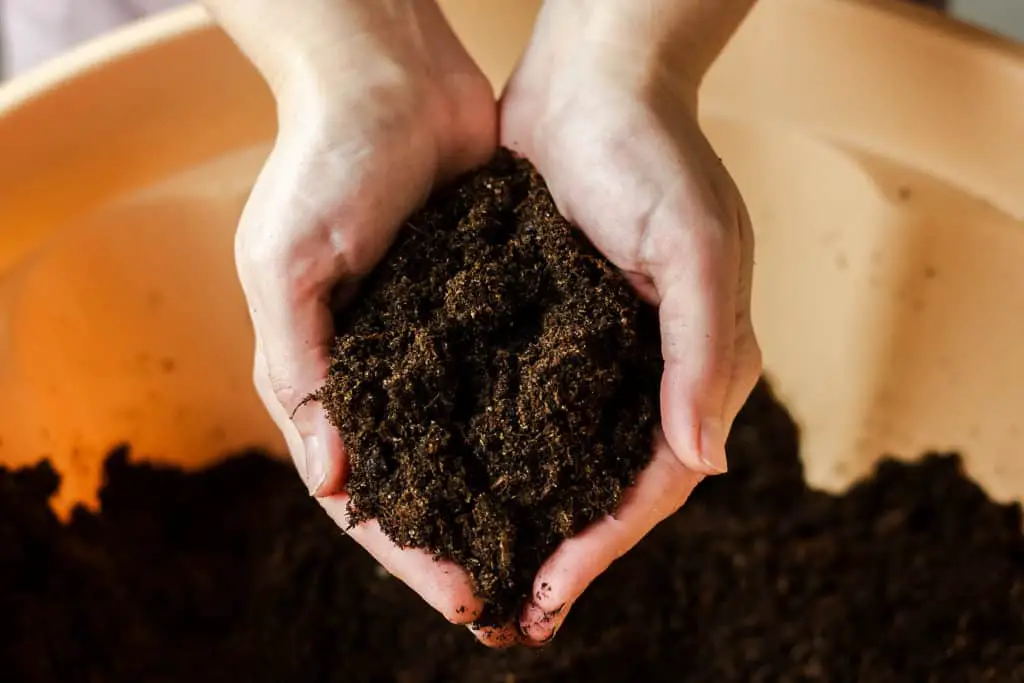
Lupin flowers are often appreciated as decorative flurries of pink and purple in open fields; picturesque crops that keep you company on long drives. One wonders: is it possible to grow them in pots?
Also if you don’t need them to be in a pot, Lupins are actually one of the seeds listed in our 25 Seeds You Can Easily Throw & Grow on the Ground.
The short answer is yes! Here’s what you need to know about their needs with some helpful tips along the way:
(As an Amazon Associate, I earn from qualifying purchases.)
Table of contents
- 1. Provide a Large and Wide Pot/Container to Plant Lupins
- 2. Use Well-draining Soil for The Lupins to Thrive in
- 3. Only Fertilize Lupins Once it Sprouts True Leaves
- 4. Water Lupins Every 3-4 Days with Rainwater
- 5. Provide Daily 6-8 Hours of Full Sun to Lupins
- 6. Prune Lupins When The Blooms are Spent to Encourage New Flowers
- 7. Do Weekly Pest Checks to Prevent Pest Infestations such as Aphids
- 8. Prevent Lupins From Changing Bloom Colors by Collecting The Seeds Before it Falls
1. Provide a Large and Wide Pot/Container to Plant Lupins

Mature lupins are tall plants, some towering over 5 feet high. However, the reason why you need a large pot is primarily to accommodate their developing deep roots. If these were forced to grow in shallow and small vessels, the plant would eventually get rootbound and have growth problems.
Some lupin varieties grow extensive rhizomatous roots, i.e., thicker rootstock akin to ginger. In this case, the plant usually only develops a few feet taller than the majority. This is where a wider container is preferable to keep the roots well-buried and spread out in its vessel. You can have a go at using this planter from Amazon.
2. Use Well-draining Soil for The Lupins to Thrive in

Lupins are adaptable plants able to thrive in almost any kind of soil. They’ve actually been found actively growing in marshlands and wetlands, indicating that wet ground isn’t much of a problem for them.
However, don’t be tempted to give them garden soil in their pots. Give them quality, fertile soil with good drainage and neutral pH for best growth. It’s worth noting that Lupins can also grow in slightly acidic soil if you intend on planting them in your garden.
3. Only Fertilize Lupins Once it Sprouts True Leaves

The primary reason why Lupins flourish in infertile soil is due to their ‘nitrogen-fixing’ trait. Their roots are specialized with bacteria that help them take nitrogen from the air, transforming it into nutrients to nourish the ground they’re in. It’s generally alright to not fertilize your Lupins since they are more than capable of doing so for themselves.
However, if you absolutely want to fertilize your Lupins, only do it after they sprout ‘true leaves’. This refers to the second or third leaf grown after germination, which looks different from the initial sprouts. Fertilizing them during this period will encourage the plant to develop more leaves, but afterward, hands off the chemical boosts. Too much Nitrogen fertilizer will cause excessive growth in the foliage rather than the flowers. So stick with fertilizers high in Phosphorus instead, or just let your Lupins do their own thing and give you those coveted blooms you desire.
4. Water Lupins Every 3-4 Days with Rainwater

Lupins prefer a constantly moist environment, but they can usually handle a bit of dryness. So don’t worry if you forgot to water them; just make sure to give them a glug when you do remember! If you live in hotter climates, you may need to water your Lupins more frequently to keep them hydrated through the warmer days.
Rainwater is often the best option for lupins because it does not contain mineral salts like in tap water. But you can also opt for filtered or distilled water instead.
5. Provide Daily 6-8 Hours of Full Sun to Lupins

Lupins prefer a constantly sunny location where possible. However, they will still thrive with dappled sun when placed in lightly shaded areas. Though, the side effect is there will be fewer blooms from your Lupins. On that note, never put your potted Lupins under heavily shaded areas. If you do, the Lupins will never produce any flowers due to the lack of sun.
Depending on your region, it’s best to grow your Lupins under some shade in hotter climates to prevent scorching. In colder areas, it’s relatively safe to keep them basking under the full sun for optimal growth and flowering.
6. Prune Lupins When The Blooms are Spent to Encourage New Flowers

Once the flowers on the lupin plants are about 70% spent, it’s time to trim those blooms off. This encourages the plant to redirect its energy into growing new flowers rather than maintaining the existing ones.
But if you do let it grow as is, side stems will start to grow on the plant to produce more flowers. This is not a bad thing; it’s the plant’s way of ‘branching out’. Whether you choose to keep them or cut them off is entirely up to you since it’s more of an ornamental preference for each gardener.
7. Do Weekly Pest Checks to Prevent Pest Infestations such as Aphids

Aphids are frequent attackers of Lupins, so it’s advisable to keep an eye out for them. They usually appear during the plant’s sprouting and flowering period. Weekly checks on your Lupins can help you spot any early infestations.
If you want to know more about aphids or pests in general, you can read all about it in this article.
8. Prevent Lupins From Changing Bloom Colors by Collecting The Seeds Before it Falls

When you leave lupin flowers to self-seed, they’ll eventually revert to their natural blue color rather than the variety you end up with. You can prevent this by collecting the seeds before they fall to the ground and grow. Here’s what you need to do:
- Check the Lupin pods and observe whether they have changed color from green to brown.
- If it is still green, it is not ready or ripe yet.
- If it has darkened to brown, give the pod a light shake. You should be able to hear the seeds rattling inside, ready to be harvested.
- With a small bowl placed underneath each pod, gently squeeze the pods open to release the seeds.
- Store the seeds in an airtight container for future planting.
With any luck and good sun, your Lupins are going to bloom splendidly in your home. Happy planting!
References:
https://www.nrcs.usda.gov/Internet/FSE_PLANTMATERIALS/publications/orpmcpg11723.pdf
https://plants.ces.ncsu.edu/plants/lupinus/
https://www.hort.purdue.edu/newcrop/afcm/lupine.html
https://extension.usu.edu/rangeplants/forbsherbaceous/lupine
https://catalog.extension.oregonstate.edu/sites/catalog/files/project/pdf/em8834.pdf
https://communityenvironment.unl.edu/lupine-0







Leave a Reply